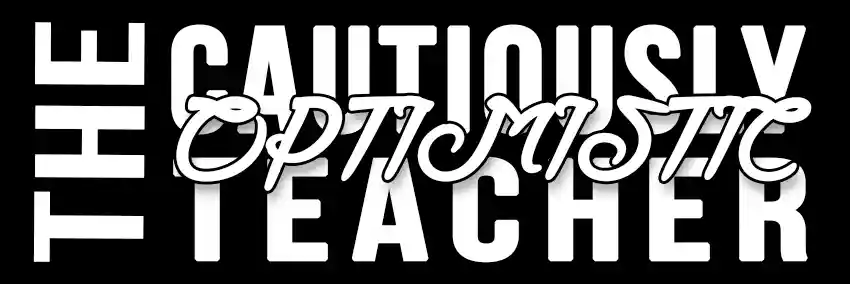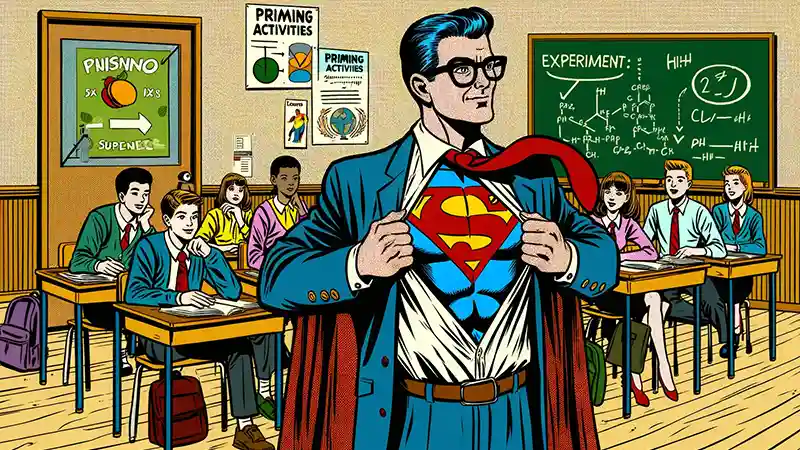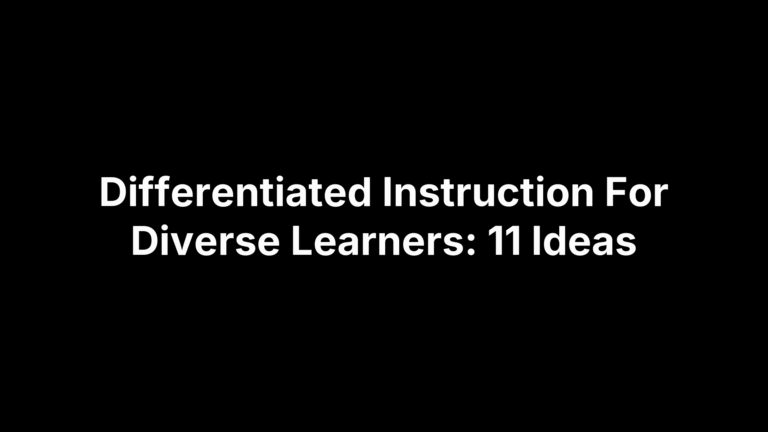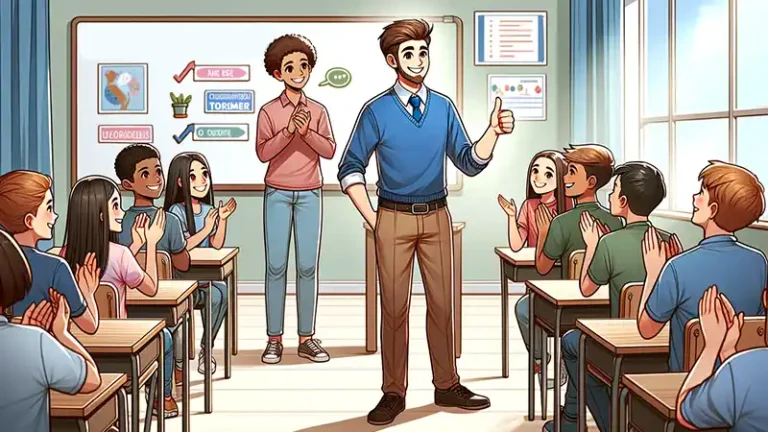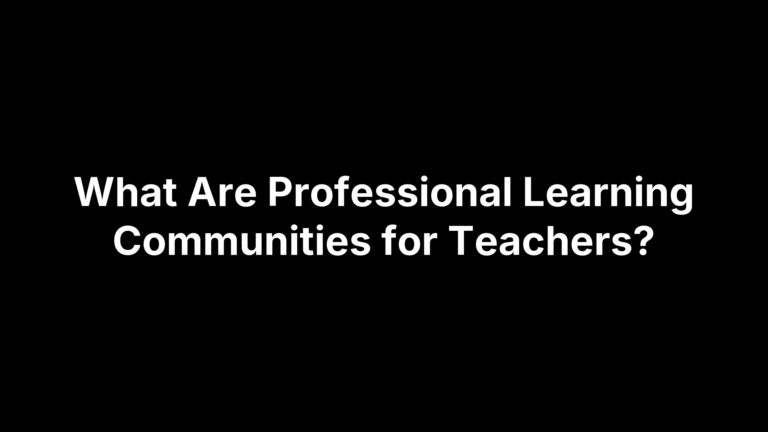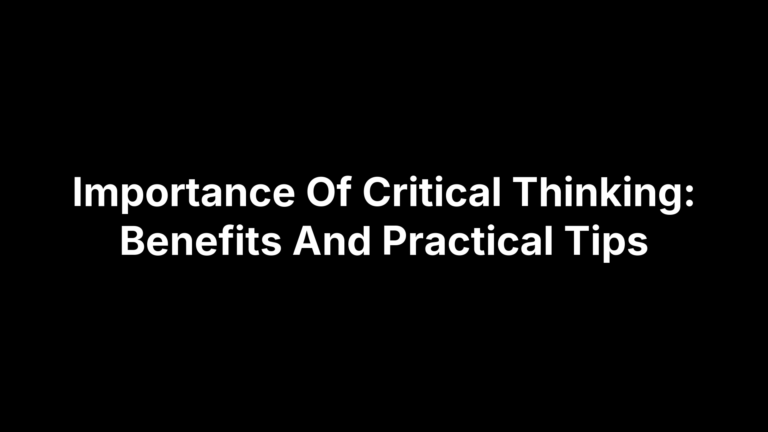Can Classroom Minds-on Activities Boost Student Focus?
It’s the end of the school year, and (honestly) my patience is wearing thin. Looking around at other teachers, I envy their seemingly calm demeanor. But when we chat, I realize they feel the same end-of-year fatigue as I do. It seems the summer itch has struck early this year, or perhaps it’s just my perception. Usually, I ride out the end of the year by grinding my teeth and drinking a little more. This year I’m going to do that (of course!) and a little more. I’m going to conduct a minds-on experiment in my classroom using priming activities.
Last week, I wrote about the Power of Classroom Priming Activities because I’ve been reading Malcolm Gladwell’s Blink. While the book isn’t solely about priming, it highlights its effectiveness in various scenarios.
So, let’s leverage what I learned last week and see if we can’t turn it into something amazing (or at least helpful) this week. Hopefully, it will keep me engaged until the end of June!
For each priming exercise, I’ll implement the activity with two classes and use my third class as a control group.
This Week’s Classroom Priming Activities
Here are my first five priming activities for this week and how they impacted my classes, if at all.
1. Monday Madness Sentence Unscramble
From the following five words, make a four-word sentence:
- like orange I concentrate juice
- great Jack tenacious Black is
- my properly eyes focus always
- zealots is zeal everyone for
- well towels absorb paper moisture
Observations and Anecdotal Notes: The control group acted as they normally would, which wasn’t a surprise. But, that is to say, it seemed like an ordinary day.
The first class that did the priming activity stunned me. After taking an extra minute to settle into the period (I suspect it’s because the priming activity was a detour from our normal practice), the class settled into an unusual work level. Not only were they hard at work, but I had students who normally try to goof around a little bit discussing answers to the worksheet.
Throughout the period, only two students seemed disengaged from the activity. Considering that this was a reading and writing activity, I would say it was an improvement from the norm. Overall, I would say that most sustained their focus for most of the period.
The results from the final class weren’t quite as inspiring. This group had the same reading and writing tasks, but they weren’t as engaged. They were slower even to participate in the activity.
This class is generally less academic than the first class and I do believe that overall they performed better than usual. The results, however, aren’t as clear as the previous group.
Overall, I would consider day one of the experiment a success.
2. Tuesday Picture Show
After briefly looking at the five images, ask students what the connection to each image might be. These images are different versions of focus or concentration, but we don’t need them to make that connection. Just some out loud pondering will do.





Observations and Anecdotal Notes: I was only able to conduct this activity with the first group because the second class was off to a school event. Silver linings, right? Turns out, the universe might have been doing me a favor. This activity didn’t didn’t exactly inspire a Renaissance of focus. I would recommend that you stay away from this one. Both the amount of work produced and the level of concentration on tasks were noticeably lower than yesterday’s session. In short: skip this one!
3. Wednesday Biography Bonanza
Read the following story to students. There doesn’t have to be any discussion about the article, but there can be if you like. Make sure that the conversation isn’t about how they should handle adversity.
Charlie Hill was a trailblazer in the world of comedy, someone who not only made people laugh but also broke new ground. Born on July 6, 1951, Charlie grew up in Detroit, Michigan, as part of the Oneida Nation, one of the Indigenous tribes of North America. Growing up in a diverse cultural background, he always felt the richness and the complexities of his heritage.
From a young age, Charlie had a sharp wit and a knack for observing the world around him. He realized early on that humor could be a way to connect with people and also to make them think. When he watched comedians on TV, he noticed something: none of them were like him. They didn’t tell stories from his perspective or share the experiences of his community. This realization didn’t discourage him; instead, it sparked a dream. Charlie decided he would be the one to bring his voice and the voices of his community to the larger world through comedy.
Charlie’s journey wasn’t easy. When he started his career in the 1970s, the world of comedy was not very welcoming to voices that deviated from the norm. He faced stereotypes and prejudices, but Charlie used these challenges as material for his comedy. He turned stereotypes on their heads, using humor to challenge and educate his audience about Native American cultures.
In 1977, Charlie made a historic appearance on “The Richard Pryor Show.” This was a significant moment because he was one of the first Native American comedians to perform on national television. His performance was funny and powerful. He addressed stereotypes directly, and while he made people laugh, he also made them think. This appearance paved the way for future appearances on shows like “The Tonight Show” and “Late Night with David Letterman,” where he continued to use his platform to raise awareness and advocate for Indigenous peoples.
Charlie Hill’s legacy goes far beyond the laughs he brought to people. He broke down barriers for Indigenous people. He showed that comedy could be a powerful tool for social change and that being true to oneself could resonate with others. He inspired future generations of comedians and performers from all backgrounds to pursue their dreams, no matter the obstacles.
Imagine being Charlie, stepping onto a big stage, facing an audience that might not fully understand or appreciate your background. Yet, you find the courage to share your story, to make them laugh, and perhaps, make them see the world a little differently.
Observations and Anecdotal Notes: This one worked out great! The first group focused even better than they did on Monday. I truly believe that the students did their best, with only one exception. That particular student is incredibly withdrawn from all of his work. He is a grade nine student who hasn’t obtained any credits this year, and unfortunately, these priming activities don’t seem to have much effect on him.
The second group performed reasonably well compared to normal. This was a better result than Monday, but I’m still not getting the same response as I do from the other class. I’m unsure if there’s a difference in how I present the activity or if it’s just the group itself. Perhaps the fact that they did respond positively is success enough.
4. Thursday’s Story
The following is a hypnotic/visualization script. Ask students to close their eyes and relax. Ask them to imagine the story as it unfolds.
As you sit comfortably in your chair, take a deep breath and let your eyes gently close. Imagine yourself standing at the edge of a vast, enchanted forest. The air is fresh and filled with the scent of pine and earth. With each breath you take, you feel more relaxed and at peace.
You begin walking on a soft, moss-covered path that winds through the trees. The leaves rustle gently in the breeze, creating a soothing symphony of sounds. The sunlight peeks through the branches, creating patterns of light and shadow on the forest floor. As you walk, you notice that each step on the path makes you feel lighter and more focused.
Soon, you come across a crystal-clear stream, its waters flowing smoothly and steadily. You pause to watch the water glide over the rocks, effortlessly finding its way around obstacles. It is persistent yet so calm and confident in its direction. You decide to put your feet in the water for a moment to feel its current against your skin.
You take your feet out of the water and continue your journey. You encounter various creatures of the forest—a wise old owl perched on a branch, a nimble deer leaping through the underbrush, and a friendly fox watching curiously from a distance. Each animal, in its own unique way, is a master of its environment, thriving by focusing on its strengths and capabilities.
Inspired, you find a comfortable spot under a grand, ancient oak tree. You sit down, leaning back against the trunk. Above you, the oak’s vast branches reach high into the sky, standing tall and strong through the seasons. You feel a connection with this tree, sensing its deep roots and expansive reach. In fact, the forest around you seems to breathe with a life of its own, each breath further clearing your mind.
As the sun begins to set, casting a golden glow over the forest, you slowly stand up, feeling refreshed and invigorated. You make your way back along the path, carrying with you the lessons of the forest: the persistence of the stream, the wisdom of the owl, the agility of the deer, and the strength of the oak.
As you reach the edge of the forest and open your eyes, you find yourself back in your classroom. Open your eyes and let’s get on with our day.
Observations and Anecdotal Notes:
After reading out the script, I noticed a few puzzled expressions, as expected. To prevent them from analyzing the visualization, I swiftly transitioned them into the first activity. During the wrap-up of the previous day’s worksheet, the class remained surprisingly focused and on task.
However, my plan to simultaneously have students complete a rather difficult quote analysis while I held individual conferences to discuss marks with students, proved challenging. While effective for the first half of the class, the visualization activity couldn’t fully compensate for this lapse in classroom management.
I tweaked my approach with the second group. Despite incorporating conferences again, I maintained closer supervision to keep them on track. The visualization activity proved more successful this time. Students were well focused and engaged, confirming its value as a tool I will undoubtedly revisit in the future.
5. Friday Quote and Write
Post the following quote in your classroom and ask students to do some free writing about it. I asked them if they agreed or disagreed with it and why. This shifts their focus from what you really want them to get out of it, which is thinking about concentration.
Teens think listening to music helps them concentrate. It doesn’t. It relieves them of the boredom that concentration on homework induces. –Marilyn vos Savant
Observations and Anecdotal Notes:
To investigate the duration of student focus after a priming activity, I assigned an analysis of quotes from To Kill a Mockingbird. This challenging task occupied an entire class period, with periodic prompts to maintain engagement.
Students worked diligently, considering it was a Friday afternoon and the quotes were demanding. The extended focus required for a single task proved difficult for some.
All but one priming activity had a noticeably positive effect on the classroom environment. This final activity demonstrated that while priming activities are beneficial, expectations must be realistic. Overly difficult tasks can exhaust students and diminish their performance.
Despite this, I intend to continue these activities and study student responses. The results are intriguing, and I plan to document this phenomenon further.
